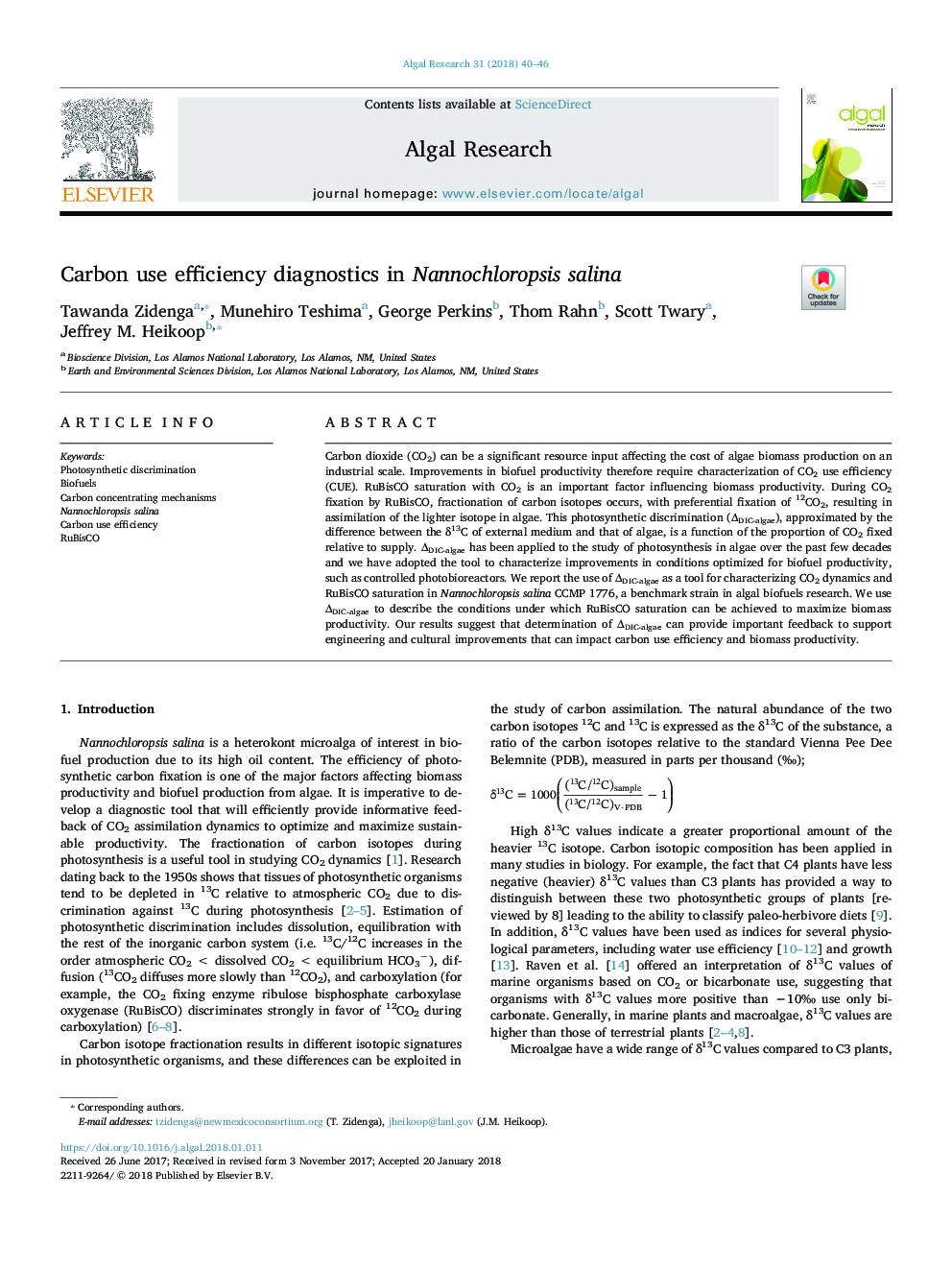| Article ID | Journal | Published Year | Pages | File Type |
|---|---|---|---|---|
| 8085955 | Algal Research | 2018 | 7 Pages |
Abstract
Carbon dioxide (CO2) can be a significant resource input affecting the cost of algae biomass production on an industrial scale. Improvements in biofuel productivity therefore require characterization of CO2 use efficiency (CUE). RuBisCO saturation with CO2 is an important factor influencing biomass productivity. During CO2 fixation by RuBisCO, fractionation of carbon isotopes occurs, with preferential fixation of 12CO2, resulting in assimilation of the lighter isotope in algae. This photosynthetic discrimination (ÎDIC-algae), approximated by the difference between the δ13C of external medium and that of algae, is a function of the proportion of CO2 fixed relative to supply. ÎDIC-algae has been applied to the study of photosynthesis in algae over the past few decades and we have adopted the tool to characterize improvements in conditions optimized for biofuel productivity, such as controlled photobioreactors. We report the use of ÎDIC-algae as a tool for characterizing CO2 dynamics and RuBisCO saturation in Nannochloropsis salina CCMP 1776, a benchmark strain in algal biofuels research. We use ÎDIC-algae to describe the conditions under which RuBisCO saturation can be achieved to maximize biomass productivity. Our results suggest that determination of ÎDIC-algae can provide important feedback to support engineering and cultural improvements that can impact carbon use efficiency and biomass productivity.
Related Topics
Physical Sciences and Engineering
Energy
Renewable Energy, Sustainability and the Environment
Authors
Tawanda Zidenga, Munehiro Teshima, George Perkins, Thom Rahn, Scott Twary, Jeffrey M. Heikoop,
